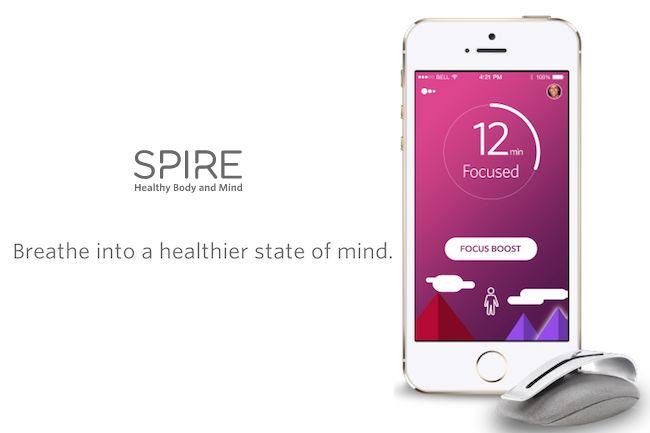
Spire is a small clip-on wearable that attaches easily to your belt or another piece of clothing. It’s best to clip the device close to your body, so that it can accurately track your breathing rate. The gadget tracks the number of steps you take, the intensity of your physical activity, and your body position. Spire is made up of two parts: the clasp and the stone. The stone is used to measure all the pertinent data and the clasp serves as a way to position the device on your body.
The device is fairly small, with the stone measuring 14 x 44 x 3 millimeters and the clasp measuring 12.5 x 52 millimeters. It comes in a sliver gray color that should be fairly inconspicuous if you have it clipped to your belt. It charges wirelessly on a small Qi charging pad provided by the company. You can also use any Qi standard charger with it, if you’ve already got one.
Spire says the battery lasts up to a week per charge and connects to your smartphone via Bluetooth. The device then sends data continuously to an app on your smartphone. Currently, Spire only has an iOS app, though, so you’re out of luck unless you have an iPhone.

While most of the wearables currently on the market use heart rate sensors to determine your stress level, Spire’s creators believe that a person’s breathing rate is a much more accurate indicator of stress. Respiration is rather easy to track and it offers a lot of data that can be applied to analyze different wellness factors.
To measure breathing, Spire must pay attention to the “rate, depth, inhalation-to-exhalation ratio (IER), durations of inhalation, retain, exhalation, and hold, consistency, smoothness, transition smoothness, and so on,” says the company website. This data is then analyzed by the app, which can send you notifications if it thinks you need to take a deep breath.
Breathing is something that anyone can easily control and improving your breathing won’t require tons of effort, skill, or a gym membership.
“Better breathing is easy to apply in our lives,” the website says. “It’s useful all the time and can be done while you live your life. Feedback about our breathing can strengthen our innate awareness of our own breath to help us become more self-aware and effective at work and in life.”
The device is available for pre-order right now at a discounted price of $110. Normally, Spire and its charging pad will cost $150. Shipping is free in the United States and Spire expects that customers will receive their breath-tracking wearable as soon as September.

